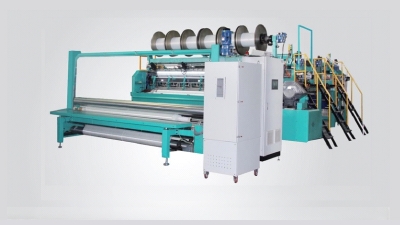Challenges Encountered with Glass Fiber Grille in Global Market
Table of Contents
- Challenges in the Glass Fiber Grille Supply Chain and Their Impact on Market Growth
- Technological Innovations Driving Glass Fiber Grille Manufacturing Efficiency
- Cost Analysis: Evaluating the Economic Benefits of Glass Fiber Grilles vs. Traditional Materials
- Market Demand Trends for Glass Fiber Grilles in Developing Economies: Opportunities and Obstacles
- Environmental Considerations: The Sustainability of Glass Fiber Grilles in Global Markets
- Competitive Landscape: Key Players and Strategies in the Glass Fiber Grille Industry
- The Ultimate Guide to Choosing the Right Equipment: Spotlight on the FCD Double Chopped Stitch Bonding Machine
- FAQS
- Conclusion
- Related Posts
Lately, the global market for glass fiber grilles has really seen some serious growth, but it hasn't been without its fair share of challenges. I mean, according to a report from Research and Markets, the worldwide glass fiber market is expected to hit around $19.22 billion by 2026, mainly thanks to the growing need for lightweight yet durable materials across different industries.
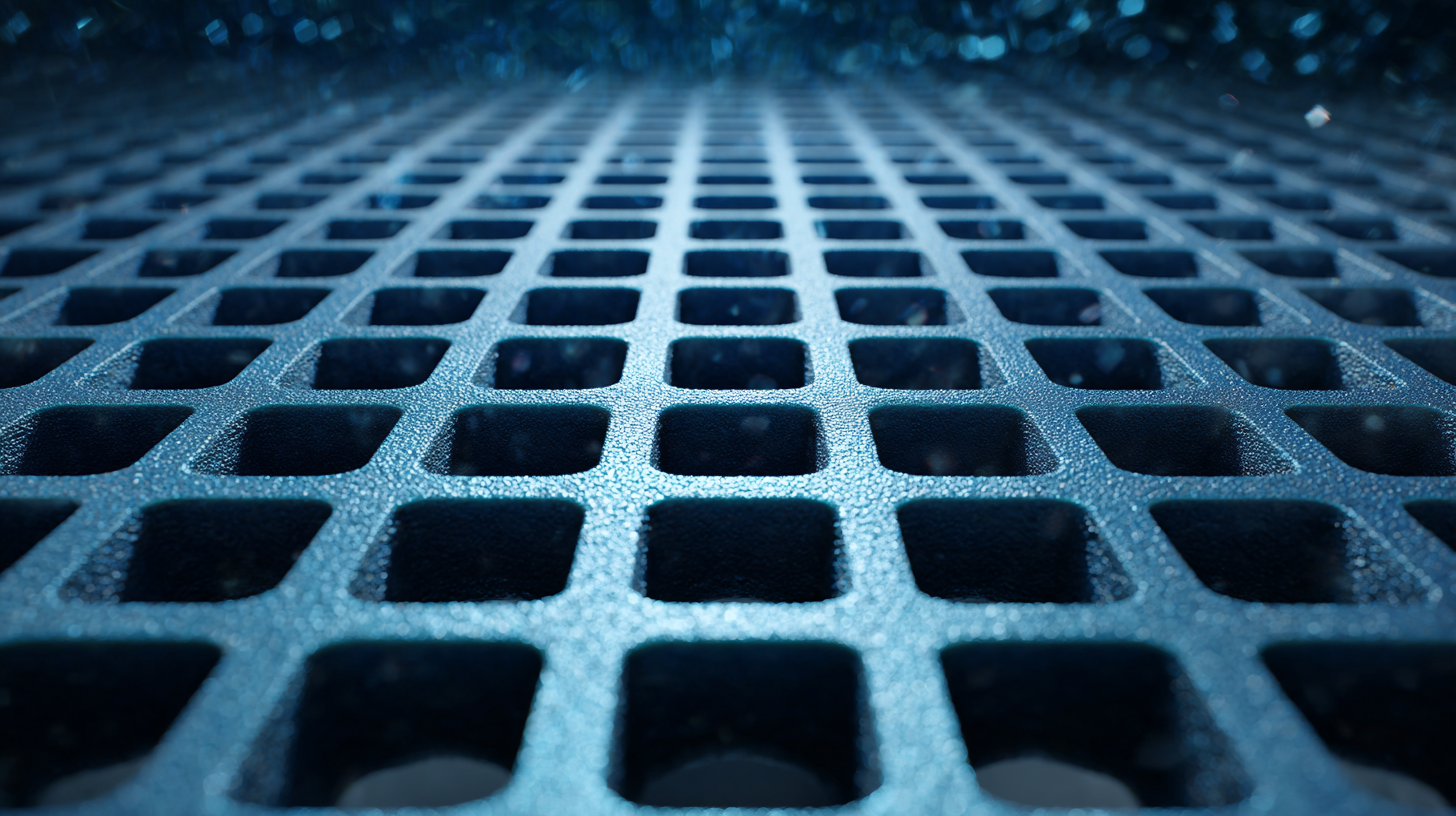
Challenges in the Glass Fiber Grille Supply Chain and Their Impact on Market Growth
You know, the glass fiber grille market is really facing some pretty tough challenges when it comes to its supply chain, and honestly, that’s causing a bit of a slowdown in overall growth. I came across a report from Grand View Research, and it’s saying that the global glass fiber market could hit around USD 12.77 billion by 2025, growing at a rate of about 3.9% — not bad, right? But here’s the catch: supply chain hiccups are throwing a wrench in the works. Things like shortages of raw materials, delays in transportation, and limits on manufacturing capacity have all gotten worse, especially with recent global issues like COVID-19. That pandemic really messed with production levels across a bunch of sectors, making everything a lot more complicated.

And it’s not just about shortages — the complexity of the entire supply chain makes things even more fragile. According to a study from Markets and Markets, as more advanced industrial applications come into play, the demand for top-notch raw materials and more sophisticated manufacturing processes keeps climbing. Manufacturers are really caught between a rock and a hard place trying to keep quality high while also rushing to meet delivery deadlines. This juggling act can mess with production schedules and even cause prices to bounce around quite a bit, which makes it super tricky for companies to plan ahead. At the end of the day, it’s clear that we all need to focus on building stronger, more resilient supply chains if we want to really thrive despite these hurdles.
Technological Innovations Driving Glass Fiber Grille Manufacturing Efficiency
You know, the glass fiber grille manufacturing world is changing pretty fast these days. Thanks to some cool tech innovations, things are getting way more efficient. For instance, recent improvements in automation mean factories can crank out grilles faster and with much greater precision. The automated fiber placement tech is a game-changer — it helps lay down those glass fibers super carefully, making sure they’re strong and durable. Plus, it’s not just about speed; it also cuts down on waste since manufacturers can produce top-quality products with less material. Pretty neat, right?
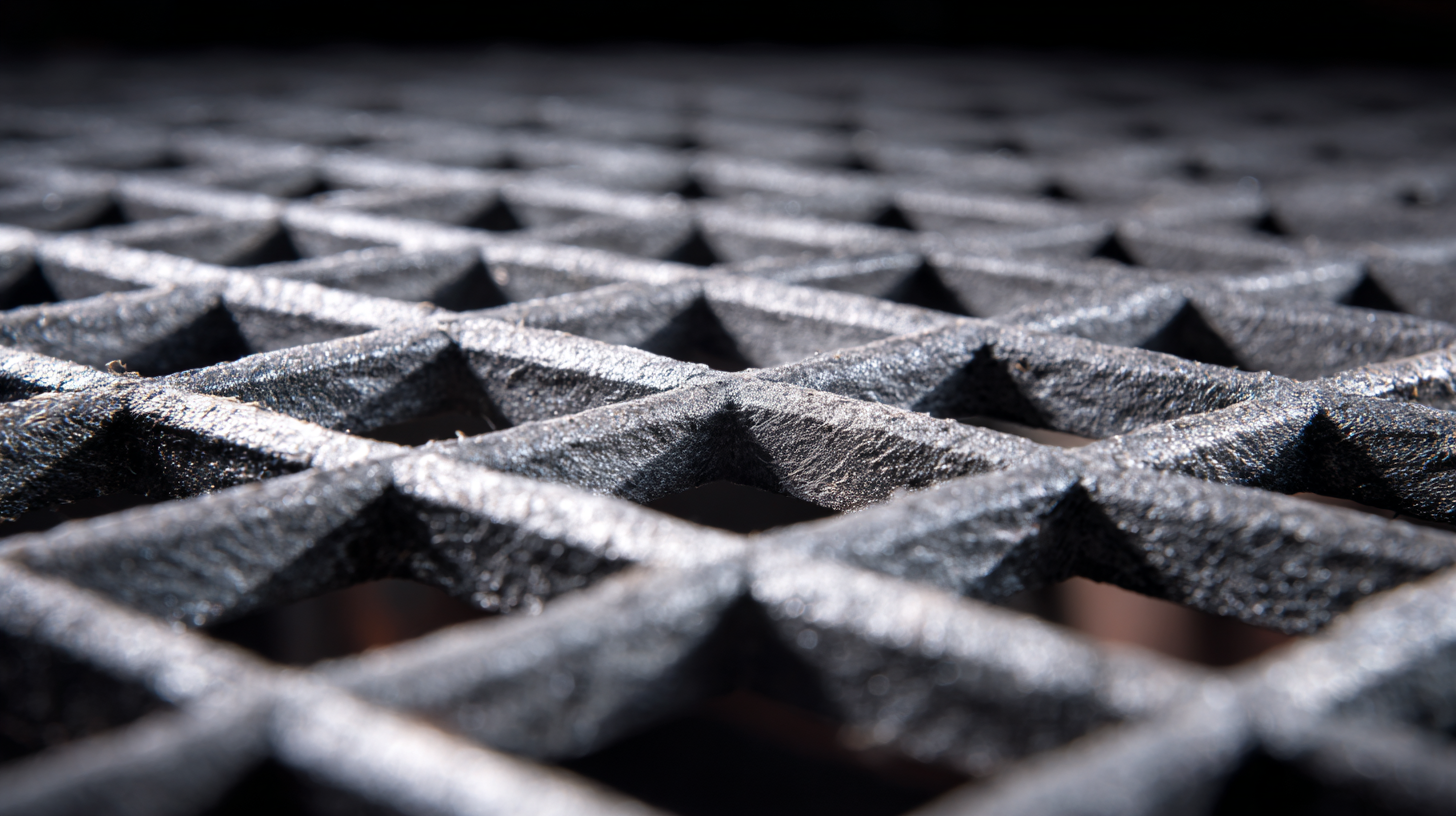
And there’s more good news! Smart technologies like IoT sensors and data analytics are totally transforming how production lines run. They let manufacturers keep an eye on everything in real time, so they can tweak things instantly to keep the process just right. It also helps predict when maintenance might be needed and spot any issues before they turn into big problems, which means less downtime and more stuff gets done. As the global demand for glass fiber grilles continues to grow, jumping into these tech advances is pretty much a must if you want to stay competitive and keep up with the market. It’s exciting to see how all these innovations are shaping the future of manufacturing!
Cost Analysis: Evaluating the Economic Benefits of Glass Fiber Grilles vs. Traditional Materials
Lately, more and more folks are starting to use glass fiber grilles in a variety of applications. They’re really gaining ground as a solid alternative to the usual metal or plastic options. When you take a closer look at costs, the upfront price for glass fiber might be a bit higher at first glance, but in the long run, it pays off. These grilles are super durable, which means less money spent on repairs and replacements down the line. Over time, those savings can really add up and outweigh the initial investment, giving you a pretty good return.
If you’re thinking about switching to glass fiber grilles, it’s a smart move to consider your specific environment. For example, in places with lots of humidity or extreme temperatures, their resistance to corrosion and thermal changes can make a huge difference. Plus, glass fiber is lighter than traditional materials, which helps cut down shipping costs and makes the installation process a lot easier.
When you’re choosing materials for a project, don’t forget to look at the bigger picture—like the overall budget and lifecycle costs. It’s not just about the purchase price; think about how much you'll spend on maintenance and operation over time. Doing some research, maybe running a quick cost-benefit analysis, can really help you make smarter decisions. That way, you’re making a choice that’s good not just now, but for the future too.
Challenges Encountered with Glass Fiber Grille in Global Market - Cost Analysis: Evaluating the Economic Benefits of Glass Fiber Grilles vs. Traditional Materials
| Material Type | Initial Cost ($/unit) | Durability (Years) | Maintenance Cost ($/year) | Weight (kg) | Economic Benefits |
|---|---|---|---|---|---|
| Glass Fiber Grille | 120 | 20 | 10 | 5 | High Strength-to-Weight Ratio |
| Aluminum Grille | 150 | 15 | 15 | 10 | Great Corrosion Resistance |
| Steel Grille | 100 | 25 | 20 | 15 | Low Initial Cost |
| Plastic Grille | 80 | 10 | 5 | 3 | Lightweight and Economical |
Market Demand Trends for Glass Fiber Grilles in Developing Economies: Opportunities and Obstacles
You know, the global market for glass fiber grilles is really starting to shake things up, especially in developing countries where the demand for composite materials is exploding. As those regions get more industrialized, there's a big push for lightweight, strong materials that can boost vehicle performance and efficiency. Glass fiber grilles? They’re gaining popularity because they pack a high strength-to-weight punch and are seen as a solid alternative to old-school metal parts. It’s all part of that larger trend toward using composites in cars, which is pretty exciting.
That said, it’s not all smooth sailing. Manufacturers still face some hurdles—like needing fancy new tech and methods to really get the most out of glass fiber. Plus, the upfront costs can be hefty, and finding skilled workers isn’t always easy in some areas. But on the flip side, there’s a growing awareness around sustainability and the environmental perks of using composite materials. Automakers are starting to care more about being eco-friendly, and incorporating glass fiber grilles could be a game-changer. Not only could they help with vehicle performance, but they also tick off a lot of regulatory boxes. All in all, it’s a pretty interesting time for the automotive world in these emerging markets, with a lot of potential ahead.
Environmental Considerations: The Sustainability of Glass Fiber Grilles in Global Markets
As we see more and more focus on sustainability in global markets, it’s pretty clear that we can't ignore the environmental impact of materials like glass fiber grilles. Honestly, glass fiber has some pretty solid perks — it’s durable and lightweight, which makes it a go-to in a bunch of different uses. Officials at the Global Glass Fiber Market Research even say that by 2026, the demand for glass fiber might grow by about 5.2% each year. That’s pretty significant! But here’s the catch: making glass fibers often takes a lot of energy and produces emissions, so it does raise some eco concerns.
That’s why manufacturers are getting creative — exploring greener ways to produce glass fibers. For example, more companies are now incorporating recycled materials or using energy-saving methods. Data from the European Composites Industry Association shows that using recycled glass fibers can cut environmental impact by roughly 30%. Not only does this help lower their carbon footprint, but it also lines up with what many consumers are really into these days — choosing products that are better for the planet.
**Pro tip:** When you’re picking out materials for your projects, think about their whole lifecycle — from production to disposal. It’s a good idea to go with suppliers who prioritize sustainability and hold up credible eco-certifications. Doing this not only helps you make responsible choices but also supports a more sustainable future, especially as markets become more conscious about green practices.
Challenges Encountered with Glass Fiber Grille in Global Market - Environmental Considerations
Competitive Landscape: Key Players and Strategies in the Glass Fiber Grille Industry
The glass fiber grille industry is really a bit of a rollercoaster right now—lots of different companies all trying to grab a bigger slice of the pie. The top manufacturers are putting a lot of emphasis on innovation these days. They’re not just making products that are lightweight and sturdy, but also ones that fit the tighter environmental rules these days. Honestly, that’s a pretty smart move, especially as the market for glass fiber grilles is growing, especially in areas like cars, construction, and industrial uses.
What’s more, partnerships and collaborations seem to be the name of the game now. Companies are teaming up with suppliers and tech firms to boost efficiency and speed up the development of cooler, more advanced glass fiber products. And let’s not forget about marketing—those aggressive digital strategies are becoming super important if companies want to reach more people and stand out in such a competitive landscape. Overall, the industry’s evolving pretty fast, and businesses are always tweaking their strategies to stay ahead of the curve, tackle challenges, and grab new opportunities when they come along.
The Ultimate Guide to Choosing the Right Equipment: Spotlight on the FCD Double Chopped Stitch Bonding Machine
When it comes to manufacturing chopped strand mat and compound mat, equipping your production line with the right machinery is crucial. The FCD Double Chopped Stitch Bonding Machine stands out as an excellent choice for these applications. With a working width of 2800mm to 3300mm, this machine is capable of handling a variety of production needs, making it a versatile asset for any facility.
One of the key specifications of the FCD machine is its impressive speed range of 50 to 900 revolutions per minute, allowing for tailored operation based on the specific products being manufactured. This adaptability is paired with a single bar setup and an eccentric pattern drive, facilitating precise bonding while maximizing efficiency. Such features make the FCD Double Chopped Stitch Bonding Machine not just a tool, but a significant contributor to improved productivity in mat production.
For manufacturers looking to enhance their operations, investing in specialized equipment like the FCD machine is essential. It streamlines the production process and elevates product quality, ensuring that you stay competitive in the fast-paced market. The integration of this advanced technology into your manufacturing line can lead to notable improvements in both output and consistency of the final products.
FAQS
: Glass fiber grilles are durable and lightweight, making them an attractive alternative in various applications, contributing to their sustainability.
The demand for glass fiber is projected to grow at a compound annual growth rate (CAGR) of 5.2% between 2021 and 2026.
The production process of glass fibers involves high energy consumption and emissions, raising concerns about its ecological footprint.
Manufacturers are exploring eco-friendly production techniques, such as integrating recycled materials and implementing energy-efficient processes.
Using recycled glass fibers can reduce environmental impact by up to 30%.
Considering the lifecycle impacts helps ensure that the materials used are environmentally responsible and sustainable, which aligns with consumer preferences.
Key players are focusing on innovation, partnerships, collaborations, and aggressive marketing strategies to enhance operational efficiencies and brand positioning.
The demand for glass fiber grilles is expanding particularly in the automotive, construction, and industrial sectors.
Companies are leveraging digital platforms and partnerships with suppliers and technology firms to reach broader demographics and reinforce their brand positioning.
Adhering to stringent environmental regulations and focusing on sustainability is crucial for companies to meet market demands and capitalize on new opportunities.
Conclusion
The global market for Glass Fiber Grilles has been facing a few hurdles lately, especially when it comes to supply chain issues. Things like getting raw materials in time and making sure deliveries go smoothly can really throw a wrench in production plans. That said, there’s good news too—tech innovations are actually helping out a lot. Manufacturers like DANYANG YIXUN MACHINERY CO., LTD are now using more advanced knitting machines, which boosts efficiency and keeps things moving smoothly. Plus, when you do the math, it turns out that Glass Fiber Grilles are pretty cost-effective compared to older, traditional materials. That makes them an attractive option across various industries.
As demand for these Grilles keeps climbing—particularly in developing countries—both new opportunities and some challenges pop up. Companies need to stay flexible and smart about market trends, all while keeping environmental impact in check to stay sustainable. The industry is pretty competitive right now, with key players using different strategies to get ahead and make the most of these changing times. It’s definitely an evolving scene, but one full of potential.
Related Posts
-

Innovative Applications of Multi-Axial Carbon Fiber in Aerospace and Automotive Industries
-
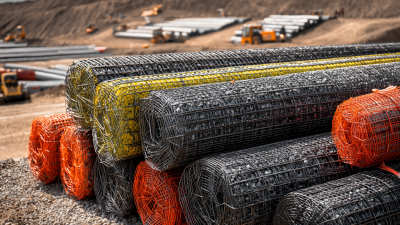
The Ultimate Guide to Understanding Geogrid Material for Construction Success
-
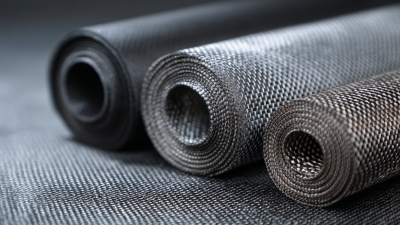
A Comprehensive Guide to Choosing the Right Multiaxial Fabric Cloth for Your Project
-
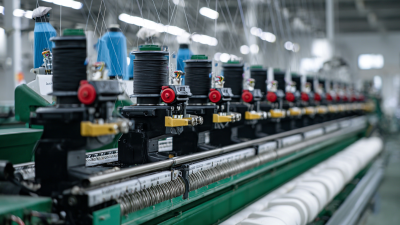
Unlocking Efficiency: Essential Strategies for Sourcing Spare Parts for Warp Knitting Machines
-
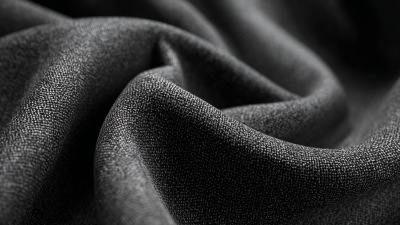
7 Essential Tips for Choosing the Right Industrial Fabric for Your Projects
-

Understanding Biaxial Cloth: An Insight into Its Types and Applications


